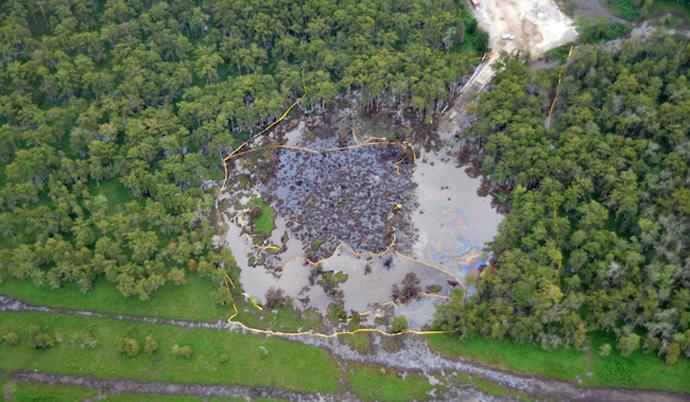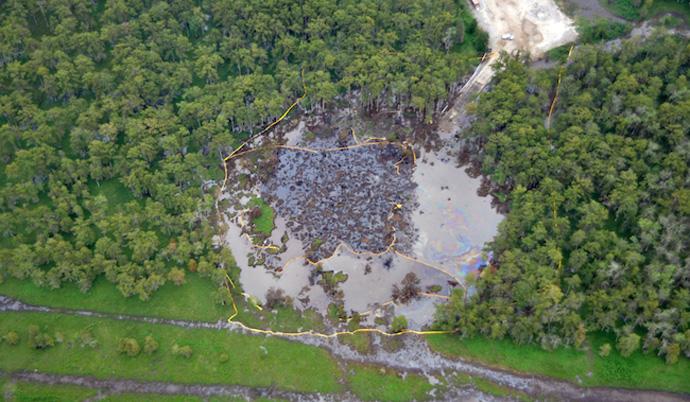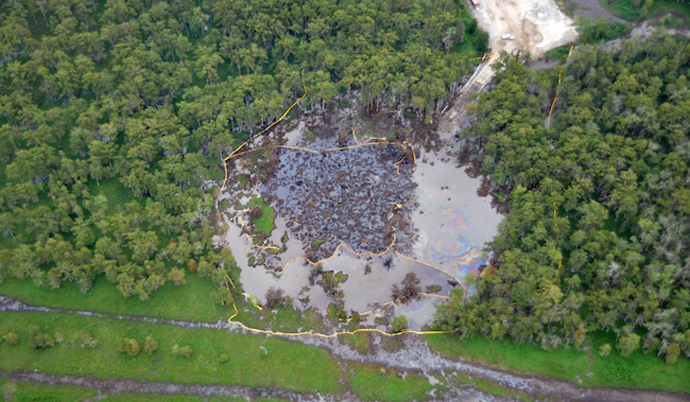Louisiana’s massive sinkhole, near Bayou Corne and Grand Bayou, continues to pose a serious problem for officials and responders. Texas Brine Company LLC, the company many officials blame for the collapse of caverns in the Napoleonville Salt Dome leading to the growing sinkhole, disputes any blame, while officials are seeking monetary compensation—and gases continue to leak out.
Emergency managers issued an evacuation order for 150 homes in the Bayou Corne area on Aug. 3 due to the sinkhole’s growing activity. The evacuation is still in effect.
The massive sinkhole now has an estimated size of between 6.2 and 7 acres, stretching about 1 by 3 miles, and it is approximately 111 feet deep.
“The outer edge of the salt dome, best we can tell, is gone,” said Dr. Gary Hecox, geologist with Shaw Environmental, according to the Examiner. Hecox was contracted by the state of Louisiana.
The sinkhole is believed to be caused by a failed cavern wall in the western-edge caverns under the Napoleonville Salt Dome owned by Texas Brine. The collapse triggered a chain-reaction of collapses, which continued to grow throughout much of autumn.
“The pressure of the brine got so much, essentially you had a fracking-out of the brine going all the way up to the surface,” explained Hecox. “That’s why you have a collapse and fracturing all the way to the surface.”
The collapse has triggered additional effects, including the release of underground natural gas, crude oil, and methane. Texas Brine is currently flaring off the escaped methane gas via relief wells, while officials are calling for more methane testing.
“[The collapse] went right on the side of the salt dome, because that’s where the rocks in the formation are the weakest,” Hecox continued. “The rocks coming down were increasing the pressure in the brine until the frack-out.”






